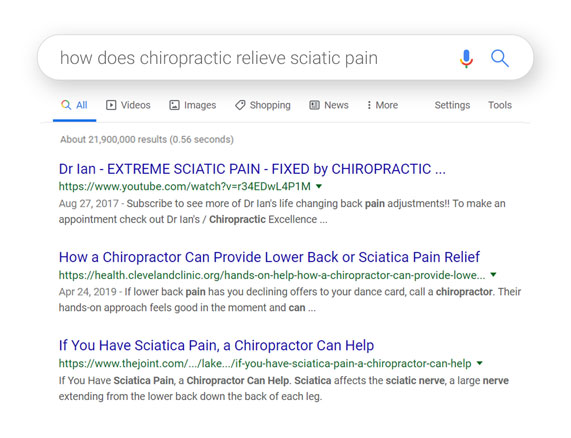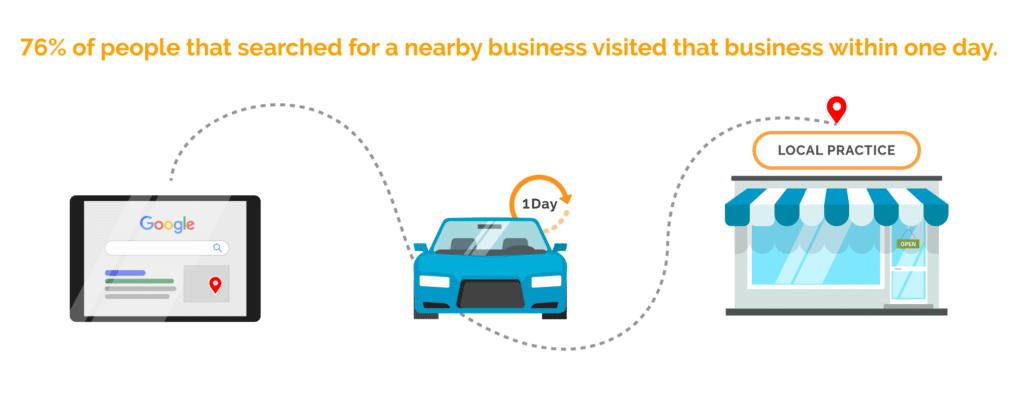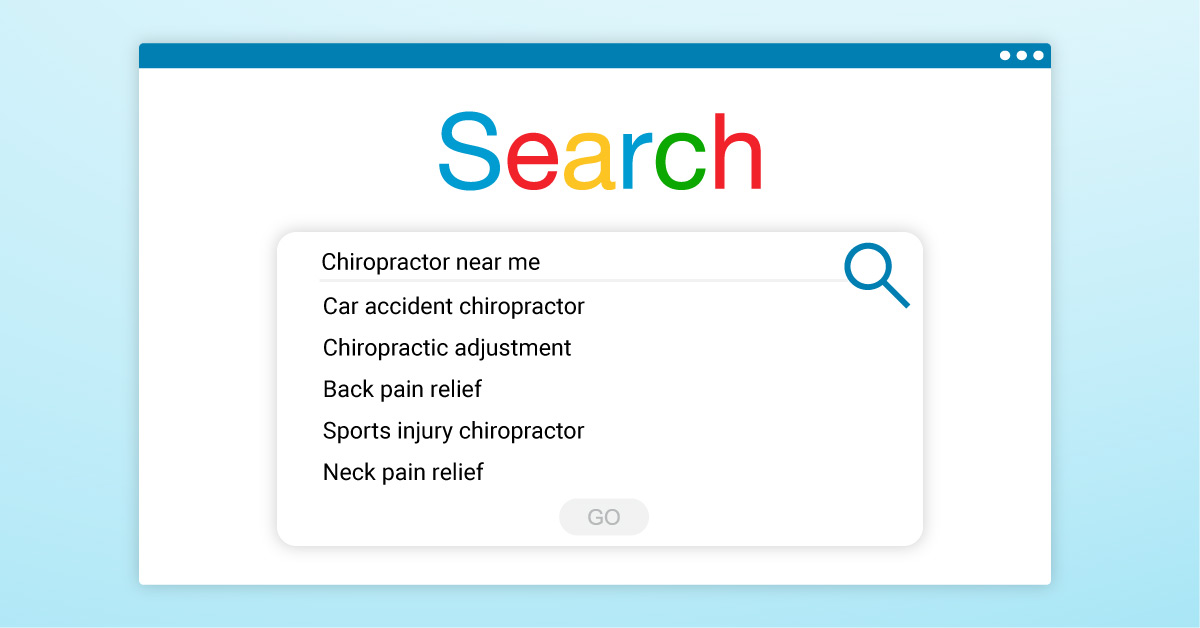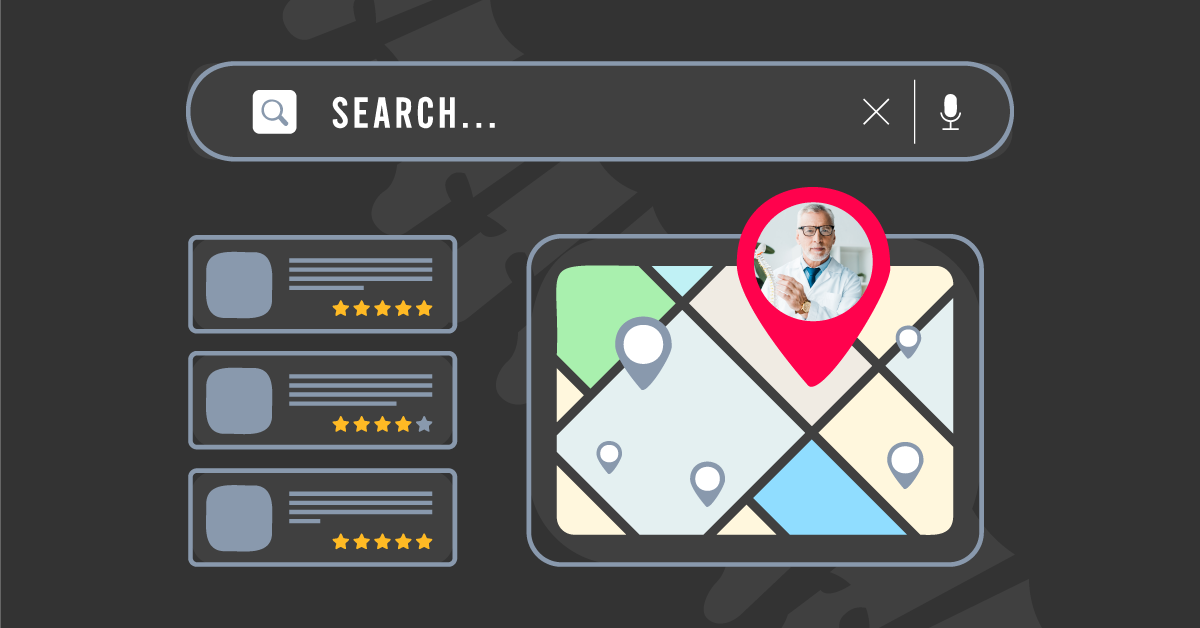What is Search Intent?
Do you know how patients come across your practice’s website?
Through a Google search, of course!
A search query is the phrase a web user types into a search bar to find information, products, services, or businesses online. When users open Google, they have a specific goal in mind. This goal is known as the search intent.
Search intent, sometimes referred to as keyword or user intent, describes what the web user is looking for and why. Are they looking for a masseuse near their current location for a same-day appointment? Do they want to purchase a refill on their contact lenses? Or maybe they’re just looking for an answer to a question they are arguing about over lunch with their friends.
Once someone enters a search query, Google’s algorithm goes to work to deliver the most relevant results to the user. Understanding how your audience is searching for businesses like yours is essential to improving your website’s search engine ranking and earning more traffic to your website.
Next, we will go over the different categories of search intent and explain how you can optimize your website to meet these search queries.
What is Search Intent?
There are three main types of user intent. While some of these may be less applicable to your business than others, it’s important to understand that there is a distinction between each. This will help you identify which users you are targeting with your website and landing pages.
- Navigational Intent
- Informational Intent
- Transactional Intent
Let’s begin, shall we?
Navigational Intent
Navigational intent is used when a person has a specific brand or website in mind during their search. For example, someone may type “Amazon” into a search bar rather than entering the URL. These search queries are specifically targeting a particular business or site, so unless a current patient is looking for your practice in particular, there isn’t much you can do to appeal to this type of user intent.
However, do check to make sure you are the top ranking website for your practice name. If a Google search for your business doesn’t show your website at the top of the organic results, there is work that needs to be done! Check out this blog for the fundamentals of SEO for local businesses.
Informational Intent
Web-users with informational intent are searching for, well, information. This may be a general search like “benefits of chiropractic” or something more specific, such as “how does chiropractic relieve sciatic pain”.

While these web users may not initially be motivated to make an appointment or a purchase, they are still at the top of the marketing funnel.
There is a chance to either convert this potential patient or build a relationship with them through your content. When your audience finds your information useful, they will be more likely to see you as an authority on a certain topic and may revisit your site the next time they have questions about that topic.
Optimizing for Informational Intent
The majority of traffic that sites gain from informational search intent will go to their blog posts and articles. This is why it’s best for you to update your site with regular content and up-to-date, educational resources for your industry. For example, if you are an optometrist, you may want to update your blog with new articles biweekly to answer commonly asked patient questions.
This content will enable you to target keyword phrases with informational intent. Oftentimes, web users will plug a direct question into a search engine. Use keywords in blog titles that reflect questions your audience may be asking. You can see this exemplified in our blog title, “What is Search Intent”!
Transactional Intent
People submitting searches with transactional intent are already a bit farther down the marketing funnel. They are searching for a particular product or service to meet their needs and are hoping to make a purchase or schedule an appointment.
Luckily for small to medium-sized businesses, local searches are often made with transactional intent. This is because many people are hoping to make an in-store purchase or find a service provider in their community. Focusing on SEO for local business can help you attract these potential patients.

Optimizing for Transactional Intent
There are many ways you can attract web traffic with transactional intent. However, the best way to do this is to implement multiple strategies so you can yield the best results from your marketing efforts.
How to target for transactional intent:

1. Target localized keywords.
If you are a local business, your ideal patient or client probably lives within your community. On your website’s primary pages, such as your About Us and services pages, use keyword phrases that mention your industry and location.
2. Invest in paid advertising.
Since web users with transactional search intent are already more likely to make a purchase, investing in paid advertising will often prove to be an effective strategy. Bidding on the most relevant keywords within your ideal location will guarantee you a top spot on SERPs and attract more attention from potential patients.
3. Include specials in text headlines.
In advertisements, you may want to consider mentioning special offers or competitive pricing. This may attract first-time patients and encourage them to convert quickly.
Why is Search Intent Important?
Understanding your customer behavior is essential to your marketing strategy. When you know how your ideal patient or client is searching for a practice like yours, you are better able to target that audience online.
Not sure how your patients are finding your practice? Start by asking new clients how they found out about your business. They may tell you that they conducted a local search on Google for your services or that they found you through a business directory listing site. You can also analyze the metrics for your website to determine which of your marketing strategies are performing best.
Happy marketing!
Check out these other helpful healthcare marketing resources.
Why Your Local Business Needs a Professional Website
10 Marketing Terms You’ve Probably Heard and What They Mean
3 Tips to be Found Locally on Google



